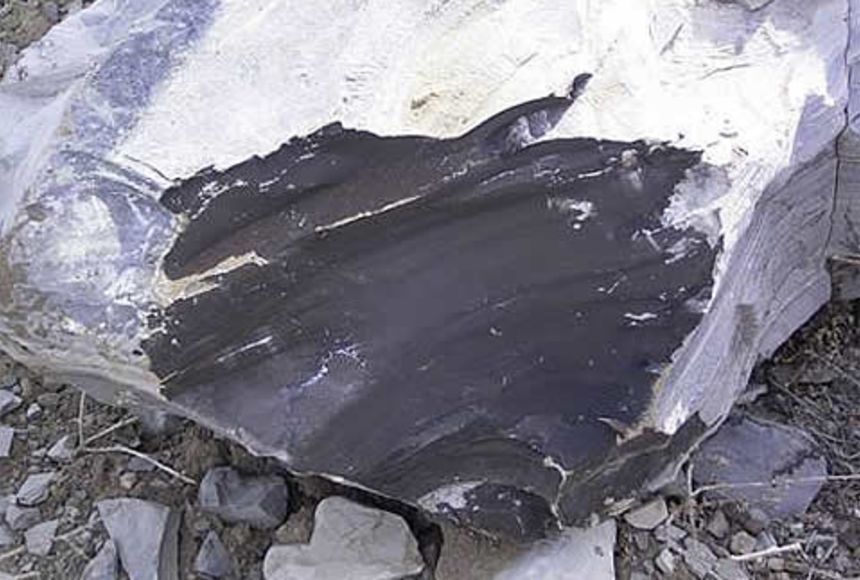What is Fossil Fuel?
Any member of the family of biologically derived hydrocarbon-containing compounds found in the Earth’s crust that can be converted into energy is known as a fossil fuel.

Coal, petroleum, natural gas, bitumen, tar sands, oil shales, and heavy oils are examples of fossil fuels. All of them are carbon-containing and were created by geologic processes that worked on the leftover organic matter from photosynthesis, which started between 4.0 and 2.5 billion years ago. Prior to the Devonian Period (419.2 million to 358.9 million years ago), the majority of carbonaceous material came from algae and bacteria, but the majority of carbonaceous material that occurred during and after that time came from plants.
Table of Contents
Used as a Power Source
To produce heat, any fossil fuel can be burned in the presence of air or with oxygen that is drawn from it. This heat can be used immediately, as in the case of residential furnaces, or it can be converted into steam and used to power electricity-generating generators. In other instances, the heat produced by burning a fossil fuel raises the temperature and pressure of the combustion products, providing motive power, as in the case of gas turbines used in jet aircraft.

Fossil fuel consumption has been steadily rising since the start of the Industrial Revolution in Great Britain in the second half of the 18th century. These days, they provide more than 80% of the energy used by the world’s industrialized nations. The quantities of the main fossil fuels that are still present on Earth are finite despite the fact that new resources are constantly being found. It is challenging to project how much fossil fuel can be economically recovered, in large part due to shifting consumption patterns, shifting values in the future, and advancements in technology.
Technological developments like directional drilling, rotary drilling, and hydraulic fracturing (fracking) have increased the amount of material that can be recovered by enabling the economical extraction of smaller, harder-to-obtain fossil fuel resources. Additionally, several petroleum-producing corporations switched to extracting heavy oil as well as liquid petroleum extracted from tar sands and oil shales as recoverable supplies of conventional (light-to-medium) oil were depleted.
Contributions to Global Warming

Carbon dioxide is one of the primary byproducts of burning fossil fuels (CO2). The use of fossil fuels in industry, transportation, and construction has been steadily rising, contributing significantly to the Earth’s atmosphere with CO2. Between 1000 CE and the late 18th century, atmospheric CO2 concentrations varied between 275 and 290 parts per million by volume (ppmv) of dry air. However, by 1959, they had risen to 316 ppmv, and by 2023, they had reached 421 ppmv. Infrared radiation, or net heat energy, is released from the Earth’s surface. CO2 acts as a greenhouse gas by absorbing this radiation and reradiating it back to the surface.
Nevertheless, one of the main causes of the significant rise in atmospheric CO2 caused by human activity is the warming of the planet. The main component of natural gas is methane (CH4), another powerful greenhouse gas. Before 1750, the concentration of CH4 in the Earth’s atmosphere was 722 parts per billion (ppb); by 2018, it had risen to 1,859 ppb, and by 2023, it had further increased to 1,919 ppb.
Many nations have worked to lessen their reliance on fossil fuels by developing renewable energy sources (such as wind, solar, hydroelectric, tidal, geothermal, and biofuels) and simultaneously improving the mechanical efficiency of fossil fuel-dependent engines and other technologies in order to allay concerns about rising greenhouse gas concentrations and diversify their energy mix.
Approximately 80% of the world’s energy was coming from fossil fuels by the early 21st century. Representatives from almost 200 countries gathered in Dubai in 2023 for the 28th Conference of the Parties to the United Nations Framework Convention on Climate Change (COP28) decided to start shifting the world’s economies away from fossil fuels and towards renewable energy sources in light of the growing threat that rising concentrations of greenhouse gases in the atmosphere pose to Earth’s climate.
To keep global average warming to roughly 1.5 °C (2.7 °F) above preindustrial levels, countries should expedite the development of solar, wind, and other renewable energy projects, with the aim of tripling renewable energy capacity by 2030. Achieving net-zero carbon emissions by 2050 would help achieve this goal.
Shale Oil

Shale oil is either a naturally occurring crude oil that is produced from subterranean shale deposits by means of fracking (hydraulic fracturing) or a synthetic crude oil that is extracted from oil shale by means of pyrolysis.
Utilising extreme heat, kerogen—a waxy organic substance found in oil shales—is broken down to liberate liquid and gaseous hydrocarbons that resemble those found in conventional petroleum, allowing for the extraction of oil from the shales. Another name for this kind of synthetic crude is kerogen oil. With current technology, there are two ways to recover the oil. One is the extraction and crushing of oil shale, followed by the rock’s transportation to a processing facility where it is heated to around 500 °C (930 °F) in special retorts.
Asphalt

Asphalt is a dark brown or black substance that resembles petroleum and can range in consistency from glassy solid to viscous liquid. It can be found in natural deposits or as a byproduct of petroleum distillation. Asphalt is mostly composed of carbon and hydrogen molecules, with trace amounts of oxygen, sulphur, and nitrogen. Whereas residual petroleum asphalt lacks minerals, natural asphalt, sometimes referred to as brea, is thought to have developed early in the breakdown of organic marine deposits into petroleum.
Vitrain
The vitrain, a macroscopically distinct component or lithotype of coal, is mainly made up of the maceral group vitrinite, which is formed from the bark tissue of big plants. It is distinguished by its bright black, glossy sheen. It rarely occurs in thicker than 0.5 inch (1.27 cm) bands that are slender and occasionally noticeably uniform. It is likely that vitrain originated in a more arid surface environment than clarain and durain lithotypes. Static groundwater inhibited the woody plant tissue’s ability to decompose after burial.
Wrapping Up
In conclusion, while fossil fuels have been crucial for powering global economies, their extensive use has led to environmental degradation and climate change. Transitioning to renewable energy sources is imperative for sustainable development and mitigating the impact of fossil fuel combustion on our planet’s health and future.
Also Read: Higgs Boson: The ‘God Particle’ Explained in Simple Words








